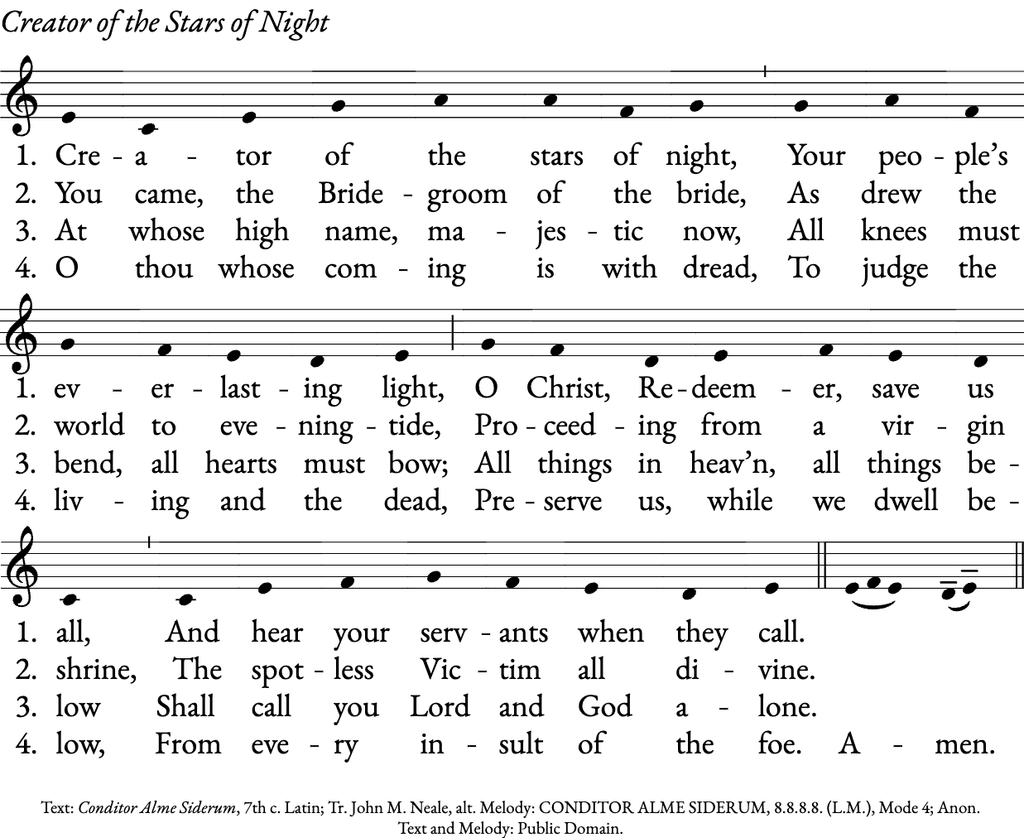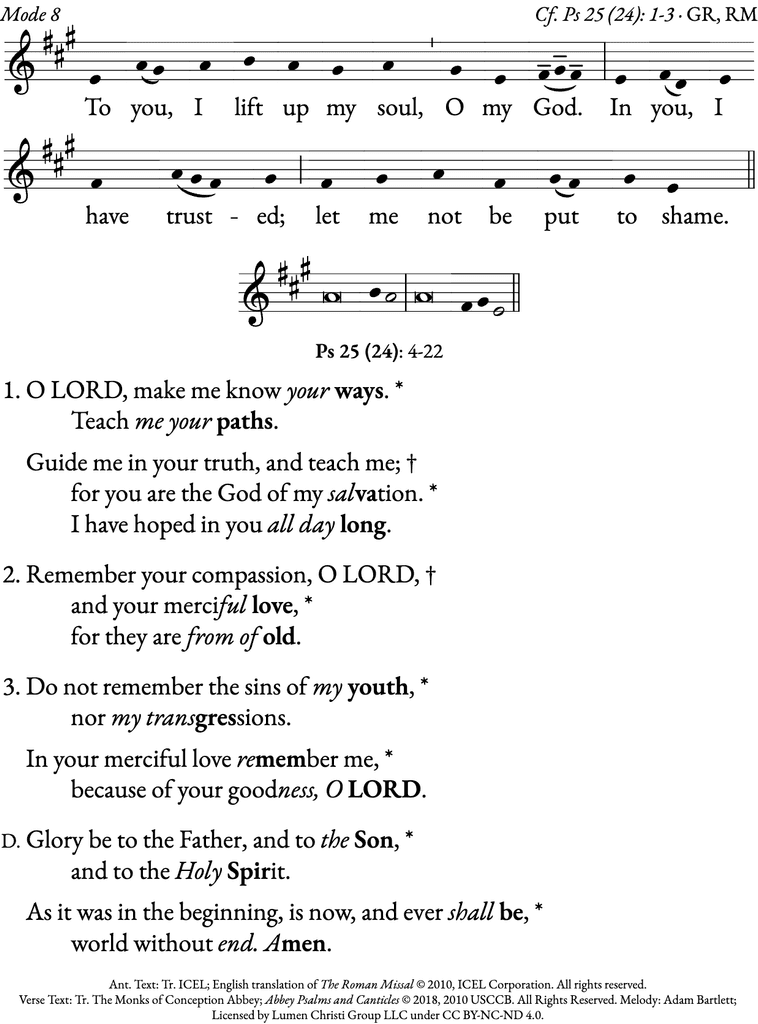Source & Summit
Sep 14, 2023
Bishop Carl A. Kemme, bishop of the Diocese of Wichita, has released a pastoral letter on sacred music entitled Let Us Sing with the Lord. In it, he offers a beautiful reflection on the role of music in the liturgy, inviting the priests, liturgical musicians, and the lay faithful of his diocese into a deeper renewal of the liturgy and of liturgical music—a task that he sees as a key part of his broader Pastoral Plan.
In the letter’s opening paragraph, Bishop Kemme recalls watching a video produced by Source & Summit in 2021 that told the story of Angie Woods, a young music director at Holy Name Parish in Denver, CO. He said:
“The video outlined how restoring the sacred nature of music in the liturgy significantly impacted the Sunday worship of a parish, which, in time, brought the parish from the brink of closure to a great renewal of parish vitality and growth. Seeing this video reignited in me a desire that I have had throughout my priesthood, serving for many years as a pastor and now as a bishop, to restore sacred music in the liturgy.”
Here is the Source & Summit Stories video that he references in his letter:
We are humbled and honored by Bishop Kemme’s kind words, and by his inspiring teaching on the liturgy and sacred music. And we are excited to support him and the parishes of the Diocese of Wichita in their efforts in the coming years to elevate the liturgy and sing the Mass.
Here is an excerpt from Bishop Kemme’s pastoral letter, Let Us Sing with the Lord:
–
Dear Priests, Pastoral Musicians, and Lay Faithful,
A few years ago, I came across a promotional video for a program for liturgical music called “Source and Summit.” The video outlined how restoring the sacred nature of music in the liturgy significantly impacted the Sunday worship of a parish, which, in time, brought the parish from the brink of closure to a great renewal of parish vitality and growth. Seeing this video reignited in me a desire that I have had throughout my priesthood, serving for many years as a pastor and now as a bishop, to restore sacred music in the liturgy.
When done well, I am convinced that music in the liturgy facilitates a transcendent experience, lifts our hearts and minds to God, and helps to bring about a fully conscious and actual participation in the Holy Sacrifice of the Mass. Because of this, I have asked the Office of Worship to implement certain principles for Sacred Music as a model for what I would like to see at the liturgy throughout our diocese. I hope our episcopal liturgies will inspire priests and musicians to take a serious look at the Sacred Music in their parishes and help align it with the vision for music in the Church. In the following words, I would like to share my vision for Sacred Music in the Diocese of Wichita. This vision is less my own; I consider it to be the Church’s vision for sacred music.
I have entitled this pastoral letter “On Sacred Music: Let us Sing with the Lord.” I believe this title expresses a profound reality about the liturgy. The Mass is the action of the whole body of Christ. In the liturgy, we, and the entire Mystical Body, participate with Christ the head in offering the one perfect sacrifice to the Father. This reminds us that the liturgy is an act of worship to the Father, through the Son, in the unity of the Holy Spirit. In the Liturgy, Christ offers God the Father the perfect sacrifice. By baptism, we are incorporated into the Mystical Body of Christ and can partake in this offering.
Christ left us the memorial of his sacrifice so that we might learn what it means to offer ourselves as a complete and total self-gift to the Father. By participating in Christ’s sacrifice to the Father, we also learn to give our lives as a living sacrifice. When the entirety of the liturgy is prayed, ad Deum, which in Latin means toward God, the liturgy sends us back into the world to live life as self-gift ad Deum. Indeed, many aspects of the liturgy portray the idea of self-gift; however, I want to emphasize how it is revealed in sacred music.
As we begin the liturgy, the priest and assisting ministers process toward the sanctuary. This represents our ascent to the Heavenly Jerusalem, where we pass from this world to the world to come. In the liturgy, we transcend space and time to participate in the sacrifice of Christ at the one altar that remains in the temple of the Heavenly Kingdom. From the onset, the music accompanying this procession should direct our thoughts to the particular mystery being celebrated, and it should resemble the song of the angels and the saints revealed to us in the scriptures. However, too often, we sing music that focuses not on God but on us. When this happens, the liturgy loses its focus on God and can become self-serving rather than self-giving.
Rather than entering into a discussion about which hymns may or may not be appropriate for use in the Mass—a subjective judgment that too often relies on personal taste and preference—my humble guidance is to turn our attention toward the texts of the Mass, which the Church herself invites us to sing. For example, just as the Church proposes texts for us to sing for the Responsorial Psalm and Alleluia, we also have proper texts intended to be sung at the Entrance, Offertory, and Communion processions.
These scripture verses, commonly called the Entrance, Offertory, and Communion Antiphons, are chosen by the Church to help reveal the particular mystery being celebrated. Therefore, rather than agonize over which hymn to choose, it seems fitting and preferable to use the texts provided by the Church as they are found in the Roman Missal and the Roman Gradual.
Throughout the tradition of the Church, most of these proper texts provided have been set to different Gregorian melodies, and even at times, the texts have been set in pieces of polyphony. A distinguishing characteristic of these texts is that the word always comes first and is more essential than the musical composition. This is important because the sung word in the liturgy is the Word that became flesh.
At first, singing the antiphons may seem like a significant shift; however, it is a form of singing that we are already familiar with since singing the antiphons with their Psalm verses resembles the singing of the Responsorial Psalm. The antiphons, with their Psalm verses, are a part of Christ’s prayer to the Father, and when we sing them in the liturgy, we unite our voice to the voice of Christ.
Read the rest of the pastoral letter here.


